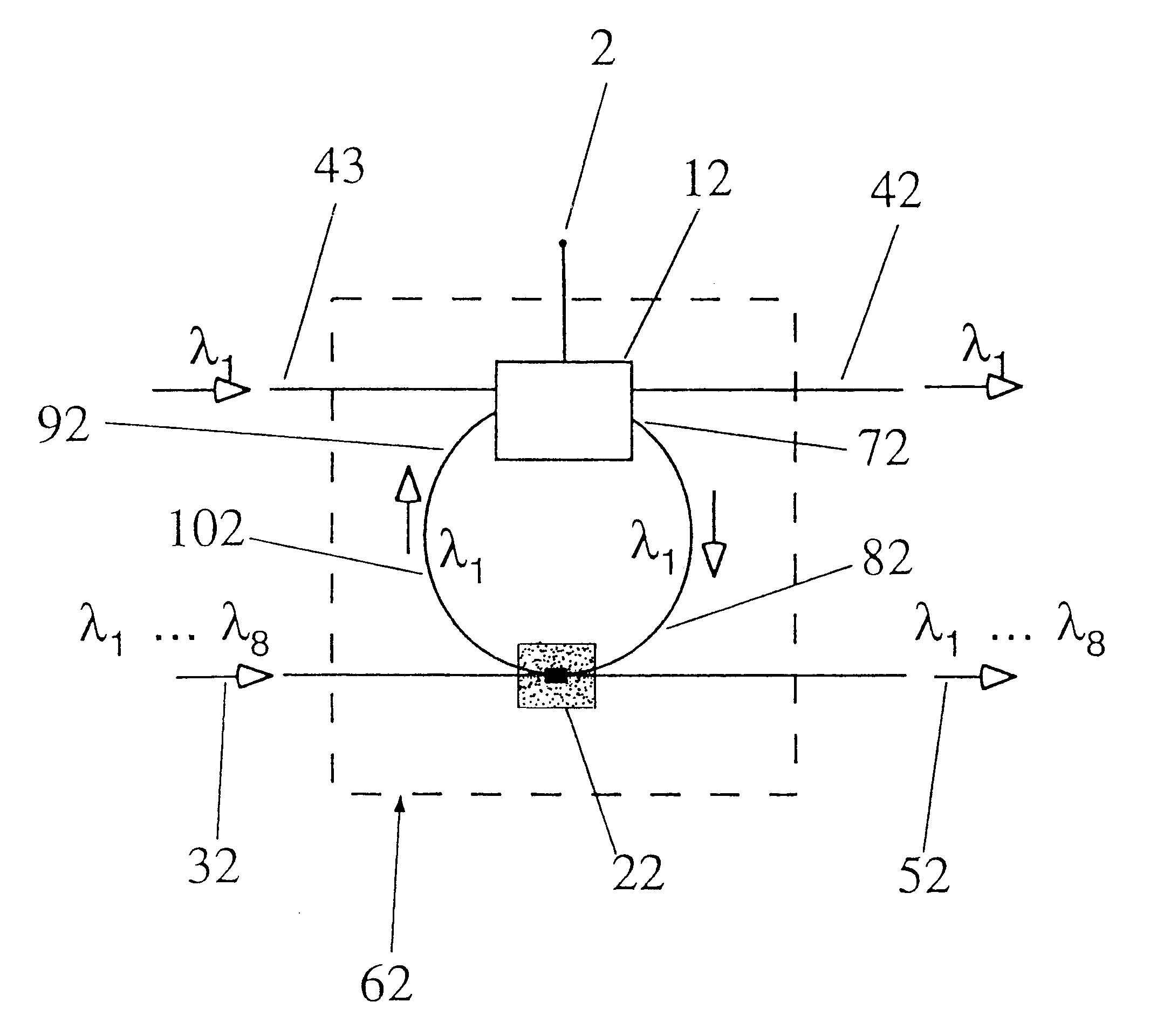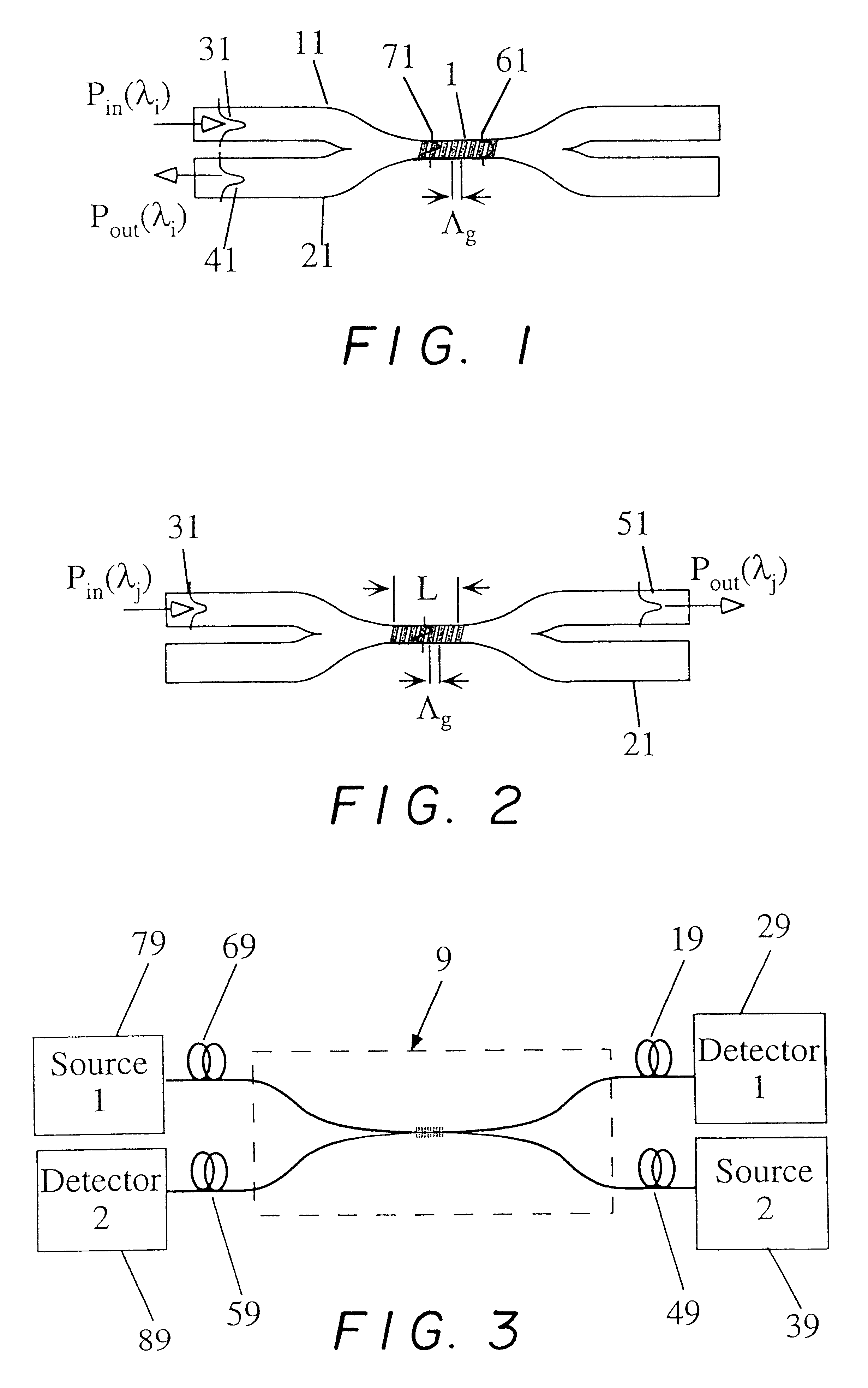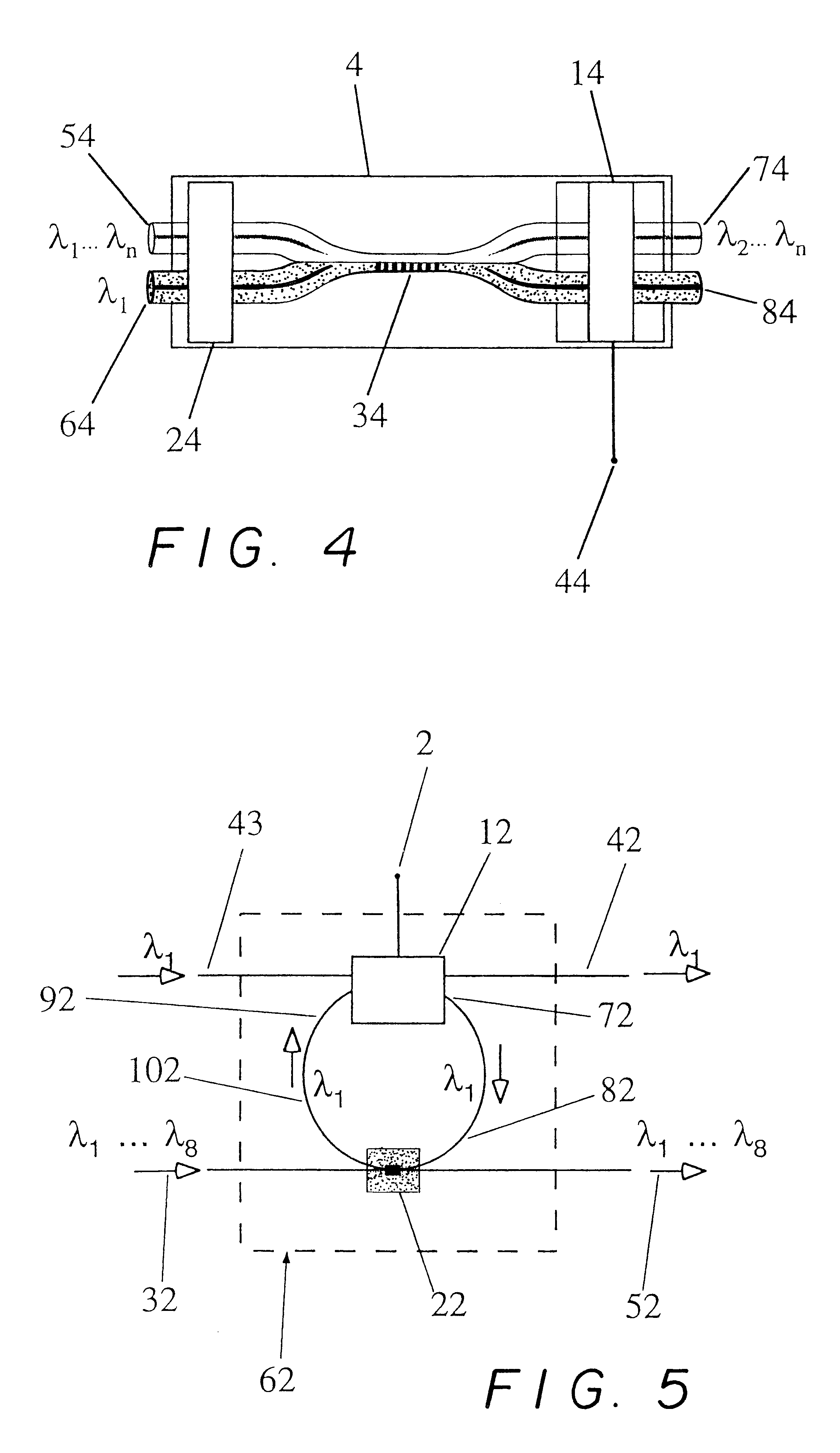Wavelength selective optical routers
a selective optical and router technology, applied in multiplex communication, transmission monitoring, instruments, etc., can solve the problems of introducing a loss of 1 db or more, affecting the power efficiency of the reflected mode, and complicated bulk optic components
- Summary
- Abstract
- Description
- Claims
- Application Information
AI Technical Summary
Benefits of technology
Problems solved by technology
Method used
Image
Examples
example 2
Wavelength Selective Optical Switch
Optical switches can be used to dynamically route information packets from one location to another or to re-configure fiber optical communications networks. These switches are typically based on electrooptic or thermooptic modulation of a directional coupler, Y-branch waveguide or Mach-Zehnder interferometer, and can achieve a modulation bandwidth in excess of 10 Ghz. They are commercially available from E-TEK, Uniphase and Akzo-Nobel, for example. An acoustic optical switch based on a fused asymmetric coupler has been described by Birks et al., Optics Letters Vol. 21, May 1996 (pp. 722-724). Relatively slow (10 ms) mechanical switches are also readily available. However, these switches typically do not allow only one of many wavelengths traveling along an individual fiber to be switched, as is desirable for wavelength routing in WDM networks. That is, these switches are not wavelength selective.
The grating assisted mode coupler enables a wavelengt...
example 3
Optical Amplifiers for WDM
Erbium doped fiber amplifiers (EDFAs) display a sufficiently broad gain spectrum to enable multiple WDM channels to be amplified simultaneously within a single fiber. However, in some instances it is desirable to route individual wavelength channels to different locations within the optical fiber network. As a result, each wavelength travels a different distance and requires a different level of amplification. A device to amplify only a single wavelength while remaining transparent to all other wavelengths is needed. Such an amplifier 63 is fabricated by combining a grating assisted mode coupler 23 and an EDFA 13 (FIG. 6). The Erbium doped fiber can be fusion spliced between the add and drop ports of the grating assisted mode coupler, for example. In addition, a standard WDM coupler can be inserted into the add / drop loop to couple in 980 nm light from a AlGaAs pump laser, for example. The electrical input 3 adjusts the optical gain (determined by the pump l...
example 4
Wavelength Selective Optical Modulator
In another example, the active element 13 of FIG. 6 is an optical modulator. A grating assisted mode coupler 23 can be used to redirect unmodulated optical energy at a particular wavelength into a standard, wavelength insensitive optical modulator 13 and return a modulated signal at this particular wavelength back onto the original fiber with extremely low loss. The is achieved by attaching the drop and add ports of an individual, grating assisted mode coupler to the input and output ports, respectively, of a standard optical modulator. This active device 63 is transparent to all other wavelengths, eliminating the undesirable loss associated with modulating multiple wavelength channels. Optical modulators are commercially available from Uniphase Inc., for example.
PUM
| Property | Measurement | Unit |
|---|---|---|
| wavelengths | aaaaa | aaaaa |
| frequency spacing | aaaaa | aaaaa |
| frequency spacing | aaaaa | aaaaa |
Abstract
Description
Claims
Application Information
 Login to View More
Login to View More - R&D
- Intellectual Property
- Life Sciences
- Materials
- Tech Scout
- Unparalleled Data Quality
- Higher Quality Content
- 60% Fewer Hallucinations
Browse by: Latest US Patents, China's latest patents, Technical Efficacy Thesaurus, Application Domain, Technology Topic, Popular Technical Reports.
© 2025 PatSnap. All rights reserved.Legal|Privacy policy|Modern Slavery Act Transparency Statement|Sitemap|About US| Contact US: help@patsnap.com



